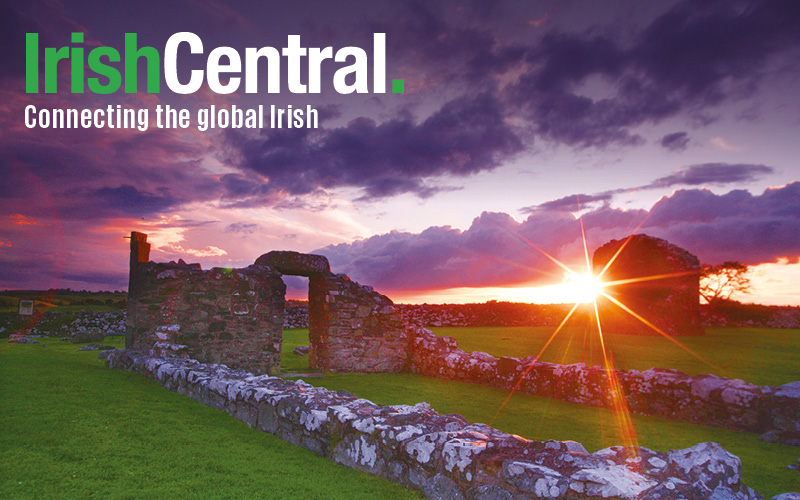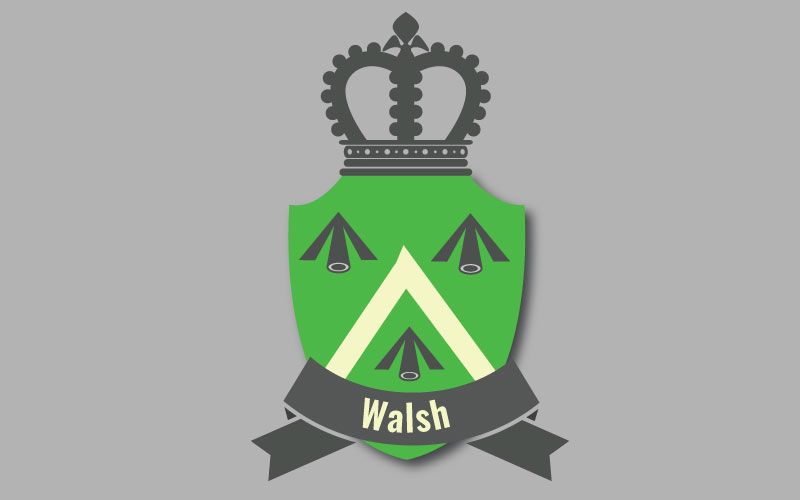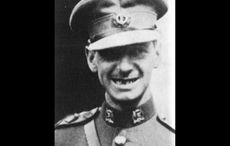John Dunleavy, 72, has been chairman of the New York City St. Patrick’s Day Parade for 16 years. Like all the other chairmen before him, he worked his way to the top, starting as a volunteer in the formation area where marchers line up to walk up 5th Avenue. He even used his influence as a dispatcher for the Manhattan and Bronx Transit Authority (now NYC Transit) to move crosstown bus stops on March 17 so that the parade would remain unblocked by traffic. From there, Dunleavy served as financial secretary, treasurer, vice chairman, and now chairman, a position he is stepping down from in this, the 250th year of the parade’s illustrious history.
“The worst thing you can do is to stay on too long,” he says. “The parade by its nature needs new blood and new ideas. But you also have an obligation to ensure that when you step down, the parade will continue the same traditions.”
Dunleavy is from the village of Coole in County Westmeath, and grew up during a time when many modern amenities had not yet reached rural areas of Ireland. His community was one of the first to get electricity in the 1940s because it had a hospital – before then, he did his homework by candlelight, and used an oil lamp “only when a visitor came into the house.”
Dunleavy’s school was about ten feet from his house so “I couldn’t mitch [skip school],” but some days his father would keep him home to help cut turf, hiding him in the back of his cart so the schoolmaster wouldn’t see. He remembers it as the hardest he’s ever worked in his life, but also as a time when everyone was happy and “you never complained.”
But that contentment didn’t stop Dunleavy from longing for the promised good life in America. He first moved to London, where he worked for seven years as a conductor and bus driver, and then moved to America in 1963 to live with an aunt. “After about two or three days of looking at four walls, I was bored to death. My cousins and I decided to try the subway for the first time. We were terrified of getting lost…and I found the Irish Institute on 48th Street, which had an employment agency. So I got myself a job.”
Along with finding a job, Dunleavy registered for the Selective Service, a requirement for young men to receive a visa to the United States. About six weeks later, he was shocked to receive a letter from the President calling him for duty in the United States Army. Dunleavy was promptly stationed at Fort Dix and then spent about two years in the Hawaiian Islands before coming back to New York, where he would begin his 25-year career in transit as a dispatcher.
By mere coincidence, a co-worker told Dunleavy that volunteers were needed to organize marchers at the formation point of the parade. That was the start of four decades of volunteer work, during which Dunleavy has been associated with some of the key moments in the parade’s history.
The first St. Patrick’s Day Parade in New York City was held 14 years before the United States won its independence. In 1762, Irish soldiers in the British Army were stationed in the American colonies. Along with a band of Irish expatriates, the soldiers gathered to speak the Irish language, sing Irish songs and wear green – an act that at the time was banned in Ireland. Since then, the parade has undergone many changes, one of the most notable being the procession, which starts at 44th Street and runs up 5th Avenue, though originally it moved towards Old St. Pat’s on Prince and Mott Streets. Staying true to its military roots, this will be the 160th year that the 69th Infantry Regiment, known as the Fighting 69th, leads the march up 5th Avenue. The mass at St. Patrick’s Cathedral, which marks the beginning of the parade each year, is celebrated in honor of the deceased members of the regiment, many of whom were Irish American.
Since those early days, the New York City St. Patrick’s Day Parade has become perhaps the most recognizable display of Irish heritage in America. The parade regularly hosts 150,000-200,000 marchers in addition to two million spectators. It is also watched on NBC by approximately half a million viewers and became available as a live stream on the Internet in 2008.
One of Dunleavy’s defining moments as chairman was also the largest year for the parade in history: 2002, less than a year after 9/11. “The amount of participation in that parade was awesome,” he says. “I sat down with the city officials and proposed that we stop the parade and have everybody turn and face southward to where the Twin Towers used to be. The officials said there was no way we’d be able to do it, but we notified every person in the parade to stop and stand at 12:28.
“At 12:28, the whole parade stopped in place and Cardinal Egan (that year’s Grand Marshal) led the prayer. And at exactly 12:30, every single person made a 180-degree turn. There were approximately 90,000 people on the avenue, another 70-80,000 in the formation area, and another 3 million people on the sidewalks. And every one of them turned around and faced south. You could hear a pin drop. President Mary McAleese was there and she said she’s witnessed a lot of things, but never in her life had she seen anything like that.”
There have been controversies too. While McAleese was the first President of Ireland ever to review the parade, she turned down an offer this year to preside as the Grand Marshal. Many theorized that McAleese rejected the offer because of her ties to gay and lesbian organizations in Ireland. The Parade Committee has prohibited gay organizations from participating in the march for over 20 years, even winning the right to do so in a Supreme Court decision handed down in 1995.
“We’ve had our battles with the gay and lesbian community,” says Dunleavy. “I never ask anybody who they are, in any way, shape, or form if they want to march in the parade. When you look at the percentages, there’s probably 160,000-180,000 people marching in the Parade, and there’s probably a couple of thousand gay and lesbian individuals [marching] with the Emerald Societies, counties, schools, colleges, Fraternals, and everything else. But as regards under their own banner, as far as we’re concerned, that’s not acceptable.”
Dunleavy was the chairman when the initial decision was made and has not seen the controversy die down since, nor does he expect it will anytime soon. Regardless, the parade goes on: the 250th march will have Mary Higgins Clark, the renowned Irish-American author, as its Grand Marshal, and is also marked by many special events. The all-volunteer committee that organizes the parade laid a wreath on the Tomb of the Unknown Soldier at Arlington National Cemetery earlier this year, among its many events that pay homage to the Irish connection to the U.S. military. The committee has also planned a 250th Anniversary Gala on March 15th at Chelsea Piers, which promises to include a fireworks display on the Hudson River.
But the crowning jewel, as always, is the parade itself, which Dunleavy has timed down to the minute over the years. Through meticulous preparation and renewed fundraising efforts, Dunleavy has helped to shape the parade into one of the biggest, if not the biggest, event in New York City. And yet it remains a non-profit endeavor, planned each year by a mere seven volunteers who make up the Officers’ Committee.
While a hardworking few run the parade, Dunleavy also wants to reach out to the next generations. “There’s many ways young people can get involved… But it’s the input they give that is the most important. When I get out on Fifth Avenue, it still puts a shiver up my spine. I’d love to see more young people while I’m walking up the avenue, involved with the parade.”
Dunleavy is taking his last walk as chairman this March 17th, but he is already at work planning his
next project. A recipient of a Doctorate in Humane Letters from Quinnipiac University in 2007, he will soon write his memoirs. Those million and one stories should come in handy.




Comments